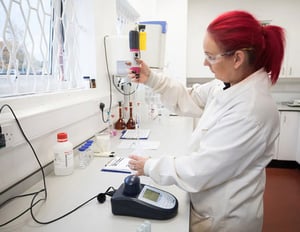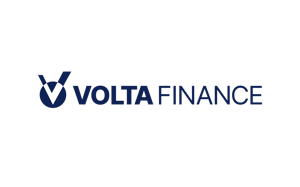Sage Group plc (LON:SGE) has announced its results for the year ended 30 September 2025 (audited)
Strategic focus driving strong, sustainable growth
Steve Hare, Chief Executive Officer, commented:
“Sage delivered another good performance in FY25. Strong, broad-based revenue growth and significant margin expansion reflect our focus on strategic execution, our resilient business model, and continuing investment in our products, our platform and our people.
“We are excited by the pace of technological change. AI is opening up new possibilities for businesses and creating a significant opportunity for Sage, enabling us to enhance and accelerate the benefits our software provides. Sage Copilot is already creating value, helping customers make smarter decisions and be more productive, while our launch of AI agents is delivering the next wave of intelligent solutions.
“With our global platform, trusted brand and focused innovation strategy, Sage is exceptionally well positioned to support small and mid-sized businesses as they adopt AI-enabled services. This drives confidence in our ability to deliver strong, sustainable growth and long-term value for all stakeholders.”
| Underlying Financial APMs[i] | FY25 | FY24[ii] | Change | OrganicChange |
| Annualised Recurring Revenue (ARR) | £2,574m | £2,329m | +11% | +10% |
| Underlying Total Revenue | £2,513m | £2,290m | +10% | +9% |
| Underlying Operating Profit | £600m | £513m | +17% | +16% |
| % Underlying Operating Profit Margin | 23.9% | 22.4% | +1.5 ppts | +1.5 ppts |
| Underlying EBITDA | £694m | £605m | +15% | |
| % Underlying EBITDA Margin | 27.6% | 26.4% | +1.2 ppts | |
| Underlying Basic EPS (p) | 43.2p | 36.7p | +18% | |
| Underlying Cash Conversion | 110% | 123% | -13 ppts | |
| Statutory Measures | FY25 | FY24 | Change | |
| Revenue | £2,513m | £2,332m | +8% | |
| Operating Profit | £530m | £452m | +17% | |
| % Operating Profit Margin | 21.1% | 19.4% | +1.7 ppts | |
| Basic EPS (p) | 37.7p | 32.1p | +18% | |
| Dividend Per Share (p) | 21.85p | 20.45p | +7% |
Please note that tables may not cast and change percentages may not calculate precisely due to rounding.
Financial highlights
· Underlying total revenue increased by 10% to £2,513m, reflecting our high-quality subscription-based recurring revenue model.
· Underlying operating profit grew by 17% to £600m, driving a strong margin increase of 150 basis points to 23.9%, with disciplined cost management supporting ongoing investment.
· Underlying EBITDA increased by 15% to £694m, with margin increasing by 120 basis points to 27.6%.
· Statutory operating profit increased by 17% to £530m reflecting growth in underlying operating profit together with lower acquisition-related expenses.
· Underlying basic EPS increased by 18% to 43.2p, whilst statutory basic EPS also increased by 18% to 37.7p.Strong cash performance, with underlying cash conversion of 110%, reflecting continued growth in subscription revenue and good working capital management.
· Robust balance sheet, with £1.0bn of cash and available liquidity; net debt to underlying EBITDA of 1.7x.
Shareholder returns
· Proposed final dividend of 14.4p, increasing the full year dividend by 7% to 21.85p, in line with our progressive policy.
· Share buyback programme of up to £300m announced separately today, reflecting Sage’s strong cash generation, robust financial position, and the Board’s confidence in Sage’s future prospects.
Strategic and operational highlights
· Underlying annualised recurring revenue (ARR) up 11% to £2,574m, with growth across all regions balanced between new and existing customers.
· Renewal rate by value of 101% (FY24: 101%), reflecting strong retention rates and a good level of sales to existing customers.
· Sage Business Cloud revenue increased by 13% to £2,083m (FY24: £1,837m), including cloud native revenue growth of 23% to £885m (FY24: £718m).
· Subscription penetration increased to 83% (FY24: 82%) driven by growth in subscription revenue of 12% to £2,093m (FY24: £1,876m).
· Strong growth across our cloud products, particularly Sage Intacct, supported by continued investment in our customer proposition and go-to-market capabilities.
· Leveraging the Sage Platform to enhance our portfolio of integrated solutions across finance, HR and payroll, supported by the acquisitions of ForceManager, Fyle and Criterion[iii].
· Scaled the availability and usage of Sage Copilot across core products including Sage Intacct, Sage X3, Sage Accounting and Sage 50, while introducing intelligent AI agents across our platform.
Outlook
In FY26, we expect organic total revenue growth to be 9% or above. Operating margins are expected to continue trending upwards in FY26 and beyond, as we focus on efficiently scaling the Group.
About Sage
Sage exists to knock down barriers so everyone can thrive, starting with the millions of small and mid-sized businesses (SMBs) served by us, our partners and accountants. Customers trust our finance, HR and payroll software to make work and money flow. By digitalising business processes and relationships with customers, suppliers, employees, banks and governments, our AI-powered platform connects SMBs, removing friction and delivering insights. Knocking down barriers also means we use our time, technology and experience to tackle digital inequality, economic inequality and the climate crisis.
A presentation for investors and analysts will be held at 8.30am UK time. The webcast can be accessed via sage.com/investors or directly via the following link: https://edge.media-server.com/mmc/p/rh8fgcxe. To join the conference call, please register via https://register-conf.media-server.com/register/BI1cf95491b8e84032966a6bd14e73d7a9.
Business Review
Sage performed well in FY25, with continued growth across all regions, in line with expectations. Disciplined cost management together with operating efficiencies supported strong operating profit and margin expansion, driving double-digit growth in earnings per share and robust cash flows.
Overview of results
The Group increased underlying total revenue by 10% to £2,513m (FY24: £2,290m), with all regions contributing to growth. In North America, revenue grew by 12%, with a strong performance from Sage Intacct together with continued growth in Sage 200 and Sage 50. In the UKIA[iv] region, revenue increased by 9%, driven by Sage Intacct together with cloud solutions for small businesses including Sage 50. In Europe, revenue increased by 7%, with growth across our accounting, payroll and HR solutions.
Our aim is to efficiently grow revenues across all products and services, by attracting new customers and delivering more value to existing customers. Sage Business Cloud, comprising our cloud native[v] and cloud connected[vi] solutions, helps customers benefit from a growing range of cloud and AI-powered services via the Sage Platform, leading to deeper customer relationships and higher lifetime values.
As a result, Sage Business Cloud total revenue increased by 13% to £2,083m (FY24: £1,837m), driven by growth in cloud native revenue of 23% to £885m (FY24: £718m) primarily through new customer acquisition, and by growth in cloud connected revenue from both existing and new customers.
Underlying recurring revenue increased by 10% to £2,436m (FY24: £2,215m), with software subscription revenue up by 12% to £2,093m (FY24: £1,876m) leading to subscription penetration of 83% (FY24: 82%). As a result, 97% of the Group’s revenue is recurring.
On an organic basis, total revenue grew by 9% to £2,506m (FY24: £2,296m), whilst recurring revenue grew by 9% to £2,429m (FY24: £2,221m).
ARR growth
ARR increased by 11% to £2,574m (FY24: £2,329m) on an underlying basis, reflecting growth balanced between new and existing customers. On an organic basis, ARR increased by 10% to £2,560m (FY24: £2,329m).
Renewal rate by value of 101% (FY24: 101%) reflects strong retention rates and a good level of sales to existing customers, including pricing and customer add-ons. In total, Sage added £200m of ARR through new customer acquisition on an organic basis during FY25, up from £185m[vii] a year earlier.
Performance by region
| North America | FY25 | FY24 | Change | Organic change |
| US | £997m | £891m | 12% | 11% |
| Canada | £141m | £127m | 11% | 11% |
| Underlying total revenue | £1,138m | £1,018m | 12% | 11% |
In North America, underlying total revenue increased by 12% to £1,138m, with growth across Sage’s key accounting solutions, particularly among mid-sized businesses. Recurring revenue grew by 12% to £1,110m (FY24: £994m), while subscription penetration increased to 82%, up from 81% in the prior year.
In the US, total revenue increased by 12% to £997m. Sage Intacct, which now represents over 45% of US revenue, grew by 23% to £461m (FY24: £374m), driven by strength across key industry verticals, particularly construction and real estate, financial services and not-for-profit, together with an enhanced commercial proposition through the expansion of suites and introduction of multi-year customer contracts. Revenue was also driven by growth in Sage 200, with good levels of upsell to existing customers and higher pricing, together with further growth in Sage X3 and Sage 50.
In Canada, total revenue grew by 11% to £141m, with good performance from Sage Intacct driven by new customers, together with growth in Sage 50. In addition, Sage HR continued to gain momentum, particularly through cross-sell to existing customers.
Adjusting for the acquisitions of Fyle in FY25 and Anvyl in FY24, organic total revenue grew by 11% in the US, and by 11% in the North America region as a whole.
| UKIA | FY25 | FY24 | Change | Organic change |
| UK & Ireland | £554m | £505m | 10% | 10% |
| Africa & APAC | £175m | £163m | 7% | 7% |
| Underlying total revenue | £729m | £668m | 9% | 9% |
In the UKIA region, underlying total revenue increased by 9% to £729m, with further strength across Sage’s accounting, HR and payroll solutions. Recurring revenue also grew by 9% to £714m (FY24: £653m), while subscription penetration was 89%, in line with the prior year.
In the UK & Ireland, total revenue grew by 10% to £554m. Sage Intacct continued to scale rapidly, driven by accelerating new customer acquisition. Sage 50 also contributed strongly, together with Sage 200, supported by a strong renewal rate and higher pricing. In addition, Sage’s cloud native solutions for small businesses, including Sage Accounting, Sage Payroll and Sage HR delivered good levels of growth. The recent launch of Sage Copilot supported the strong performance of both Sage 50 and Sage Accounting. Revenue was also driven through the continued growth of Sage for Accountants.
In Africa & APAC, total revenue grew by 7% to £175m, with continued growth in Sage Accounting and Sage Payroll, driven by new customer acquisition and higher pricing, together with a strong performance from Sage Intacct. Sage X3 and local products in the Sage 50 franchise also continued to contribute to growth.
| Europe | FY25 | FY24 | Change | Organic Change |
| France | £324m | £306m | 6% | 6% |
| Central Europe | £155m | £146m | 6% | 6% |
| Iberia | £167m | £152m | 10% | 7% |
| Underlying total revenue | £646m | £604m | 7% | 6% |
Europe achieved underlying total revenue growth of 7% to £646m, reflecting a strong performance particularly in Sage 200, Sage X3, HR and payroll solutions. Recurring revenue grew by 8% to £612m (FY24: £568m), while subscription penetration increased to 79%, up from 76% in the prior year.
In France, total revenue grew by 6% to £324m driven by accounting solutions. Sage X3 was a significant contributor of growth, with continued strong customer demand, while Sage 200 also performed well. In addition, Sage Intacct continued to see early traction as the solution starts to scale.
Central Europe achieved a total revenue increase of 6% to £155m. HR and payroll solutions, which represent almost half the region’s revenue, grew strongly, driven by upsell to existing customers together with new customer wins. Growth was also driven by Sage 200, mainly through sales to existing customers.
In Iberia, total revenue grew by 10% to £167m, reflecting strength across Sage 200 and Sage 50 driven by renewals, higher pricing and new customers. Growth was also driven by ForceManager, a mobile workforce management solution acquired in October 2024. In addition, Iberia achieved good levels of growth from accountants, following the recent introduction of Sage for Accountants into the region.
Adjusting for the impact of the ForceManager acquisition, organic total revenue grew by 7% in Iberia, and by 6% in the Europe region as a whole.
Strategic progress
Our strategic framework for growth includes three key focus areas: connecting SMBs through our trusted and thriving network, growing by winning new customers and delighting existing ones, and delivering productivity and insights driven by AI. Our progress in each of these areas is outlined below.
Connect
The Sage Platform is the foundation for our trusted and thriving network for SMBs, connecting products, partners and customers in an intelligent ecosystem. As we connect more customers to the platform, we are expanding the scale and scope of our services, delivering greater value and transforming customer workflows. During the year we significantly grew services such as accounts payable and accounts receivable automation, enhanced our expense management capabilities through the acquisition of Fyle, drove growth through payroll and HR, and increased revenue from payment services – helping SMBs get paid, pay suppliers, pay employees and manage capital. In October 2025 we strengthened our human capital management (HCM) capabilities with the acquisition of Criterion, a unified cloud HR, payroll and talent engagement solutions provider, enhancing our offering to mid-market businesses. We are also innovating to expand our reach, delivering a rapidly growing set of embedded accounting and tax services to fintech and other partners such as Tide, Monzo and NatWest.
Grow
Our aim is to expand revenues across all products and services, with a focus on the greatest growth opportunities. We continue to scale Sage Intacct, our flagship solution for mid-sized businesses, which grew strongly in the US, expanded rapidly in the UK, Canada and South Africa, and gained early traction in France and Germany. Reflecting this progress, Sage Intacct grew ARR by over 20% in the US and by around 50% outside the US. We also drove value through the rollout of specialist suites across the construction, not-for-profit, software, financial services, professional services, healthcare and hospitality verticals. For small businesses and accountants, we are focused on augmenting our proposition through product and package enhancements, including in Sage Accounting and Sage 50, driving strong ‘in-life’ growth and new customer acquisition particularly in the UKIA region. In Europe, Sage Active growth accelerated following enhancements including the integration of AI-driven insights and automation.
Deliver
Our ambition is to create the world’s most trusted and thriving network for SMBs, powered by AI. During the year, we continued to scale Sage Copilot, our generative AI-powered assistant, in availability and usage across core products including Sage Intacct, Sage X3, Sage Accounting, Sage 50, Sage for Accountants, and Sage Active. With strong feedback, Sage Copilot is driving value for customers, helping them get paid faster and save time on manual tasks. We are further developing Sage Copilot with the introduction of agents to automate tasks across compliance, reconciliation, accounts payable and tax, allowing customers to focus on higher-value strategic work. These include the Making Tax Digital (MTD) for Income Tax Agent to support accountants in the UK, and the Finance Intelligence Agent to support Sage Intacct customers in the US and the UK. We are also leveraging AI to drive productivity internally, with benefits across business areas including in engineering and customer support.
Sustainability and Society
Sage’s Sustainability and Society strategy underscores our commitment to serve all our stakeholders, including our colleagues and communities. We have made good progress across our three pillars – Protect the Planet, Tech for Good and Human by Design – and embedded sustainability across our operations, products and culture. We launched the Sage Impact Entrepreneurship Programme, which was completed by more than 50 businesses in FY25, helping them access a combination of funding, mentorship, training and products. In July, Sage Foundation celebrated ten years of impact, having raised over US$5m and facilitated 1.4 million volunteering hours over the last decade for local communities and causes.
In FY25, Sage was recognised in Newsweek’s World’s Greenest Companies, TIME and Statista’s World’s Most Sustainable Companies, and ranked in the top 30 of the Financial Times Europe Climate Leaders list. We maintained our ‘Gold’ rating from EcoVadis and our ‘AAA’ ESG rating from MSCI, and we were awarded CDP A List status for Climate Leadership and Supplier Engagement. We also won the edie 2025 award for Sustainability Reporting & Communications.
Forthcoming senior management change
On 31 March 2026, after almost five years at Sage, Walid Abu-Hadba will step down as Chief Product Officer and take on a new role as technology advisor to the Group in a part-time capacity. The search for a successor is under way.
Financial Review
The financial review provides a summary of the Group’s results on a statutory and underlying basis, alongside its organic performance. Underlying measures allow management and investors to understand the Group’s financial performance adjusted for the impact of foreign exchange movements and recurring and non-recurring items, while organic measures also adjust for the impact of acquisitions and disposals[viii].
Statutory and underlying financial results
| Financial results | Statutory | Underlying | ||||
| FY25 | FY24 | Change | FY25 | FY24 | Change | |
| North America | £1,138m | £1,052m | +8% | £1,138m | £1,018m | 12% |
| UKIA | £729m | £670m | +9% | £729m | £668m | 9% |
| Europe | £646m | £610m | +6% | £646m | £604m | 7% |
| Total revenue | £2,513m | £2,332m | +8% | £2,513m | £2,290m | +10% |
| Operating profit | £530m | £452m | +17% | £600m | £513m | +17% |
| % Operating profit margin | 21.1% | 19.4% | +1.7 ppts | 23.9% | 22.4% | +1.5 ppts |
| Profit before tax | £484m | £426m | +14% | £555m | £486m | +14% |
| Profit after tax | £369m | £323m | +14% | £423m | £370m | +14% |
| Basic EPS | 37.7p | 32.1p | +18% | 43.2p | 36.7p | +18% |
The Group achieved statutory and underlying total revenue of £2,513m in FY25. Statutory total revenue increased by 8%, reflecting underlying total revenue growth of 10% offset by a 2-percentage point foreign exchange headwind, with sterling strengthening against key currencies.
Statutory operating profit increased by 17% to £530m, reflecting a 17% increase in underlying operating profit to £600m, together with a £7m decrease in recurring and non-recurring items[ix], mainly relating to lower acquisition-related expenses.
Statutory and underlying basic EPS increased by 18%, to 37.7p and 43.2p respectively, mainly reflecting higher underlying profit, with an increase in net finance costs offset by a reduction in the weighted average number of shares as a result of recent share buybacks.
Revenue – underlying and organic reconciliation to statutory
| Total revenue bridge | FY25 | FY24 | Change |
| Statutory | £2,513m | £2,332m | +8% |
| Impact of FX | – | (£42m) | |
| Underlying | £2,513m | £2,290m | +10% |
| Disposals | – | – | |
| Acquisitions | (£7m) | £6m | |
| Organic | £2,506m | £2,296m | +9% |
Statutory and underlying revenue was £2,513m in FY25. Underlying revenue in FY24 of £2,290m reflects statutory revenue of £2,332m retranslated at current year exchange rates, resulting in a foreign exchange headwind of £42m. Organic revenue in FY25 was £2,506m, reflecting underlying revenue of £2,513m adjusted for £5m of revenue from the acquisition of ForceManager and £2m from the acquisition of Fyle during the year. Organic revenue in FY24 of £2,296m reflects underlying revenue of £2,290m, adjusted for £6m of revenue from Anvyl and Infineo, which were acquired at the end of FY24.
Operating profit
The Group increased underlying operating profit by 17% to £600m (FY24: £513m), resulting in a strong increase in underlying operating margin of 150bps to 23.9% (FY24: 22.4%). This was driven by revenue growth and operating efficiencies, with disciplined cost management supporting ongoing investment. On an organic basis, adjusting for the impact of acquisitions in FY24 and FY25, operating profit increased by 16% to £600m (FY24: £515m) while margin was in line with underlying.
Operating profit – underlying and organic reconciliation to statutory
| Operating profit bridge | FY25 | FY24 | ||
| Operating profit | Operating margin | Operating profit | Operating margin | |
| Statutory | £530m | 21.1% | £452m | 19.4% |
| Recurring items[x] | £73m | £82m | ||
| Non-recurring items: | ||||
| · Reversal of property restructuring | (£2m) | – | ||
| · Reversal of employee-related costs | – | (£3m) | ||
| · Reversal of restructuring costs | (£1m) | (£2m) | ||
| Impact of FX[xi] | – | (£16m) | ||
| Underlying | £600m | 23.9% | £513m | 22.4% |
| Disposals | – | – | – | – |
| Acquisitions | – | – | £2m | – |
| Organic | £600m | 23.9% | £515m | 22.4% |
The Group achieved a statutory operating profit in FY25 of £530m. Underlying and organic operating profit of £600m in FY25 reflects statutory operating profit adjusted for recurring and non-recurring items.
Recurring items of £73m (FY24: £82m) comprise £42m of amortisation of acquisition-related intangibles (FY24: £48m) and £31m of M&A-related charges (FY24: £34m). Non-recurring items in FY25 comprise a £2m reversal of property restructuring costs (FY24: nil) and a £1m reversal of other restructuring costs (FY24: £2m). Non-recurring items in FY24 also comprised a £3m reversal of employee-related charges for French payroll taxes relating to previous years. Together, recurring and non-recurring items reduced by £7m compared to the prior year.
In addition, the retranslation of FY24 underlying and organic operating profit at current year exchange rates has resulted in an operating profit headwind of £16m. This has led to a 30-basis point margin headwind from foreign exchange to 22.4% (FY24 underlying as reported: 22.7%).
Organic operating profit of £515m in FY24 reflects underlying operating profit of £513m adjusted for £2m of operating profit from Anvyl and Infineo, which were acquired at the end of FY24.
Underlying EBITDA
Underlying EBITDA was £694m (FY24: £605m) representing a margin of 27.6%. The increase in underlying EBITDA principally reflects the growth in underlying operating profit.
| FY25 | FY24 | FY25 Margin | |
| Underlying operating profit | £600m | £513m | 23.9% |
| Depreciation & amortisation | £48m | £47m | |
| Share-based payments | £46m | £45m | |
| Underlying EBITDA | £694m | £605m | 27.6% |
Net finance cost
The underlying net finance cost for FY25 increased to £45m (FY24: £27m) mainly reflecting higher interest expense following the new debt issuance (see page 9), together with lower interest income on cash and cash equivalents during the year. The statutory net finance cost of £46m (FY24: £26m) is broadly in line with the underlying net finance cost.
Taxation
The underlying tax expense for FY25 was £132m (FY24: £116m), resulting in an underlying tax rate of 24% (FY24: 24%). The statutory income tax expense for FY25 was £115m (FY24: £103m), resulting in a statutory tax rate of 24% (FY24: 24%).
Earnings per share (EPS)
| FY25 | FY24 | Change | |
| Statutory basic EPS | 37.7p | 32.1p | +18% |
| Recurring items | 5.7p | 6.3p | |
| Non-recurring items | (0.2)p | (0.5)p | |
| Impact of foreign exchange | – | (1.2)p | |
| Underlying basic EPS | 43.2p | 36.7p | +18% |
Underlying basic EPS and statutory basic EPS increased by 18% to 43.2p and 37.7p respectively, mainly reflecting higher underlying operating profit.
Cash flow
Sage remains highly cash generative with underlying cash flow from operations increasing by 2% to £660m (FY24: £649m), representing underlying cash conversion of 110% (FY24: 123%). This strong cash performance reflects growth in subscription revenue and strength in receivables collection, partly offset by increased capital expenditure due to workplace investment together with the timing of certain payments to third parties. Free cash flow of £517m (FY24: £524m) reflects robust underlying cash conversion offset by higher net interest and income tax.
| Cash flow APMs | FY25 | FY24 (as reported) |
| Underlying operating profit | £600m | £529m |
| Depreciation, amortisation and non-cash items in profit | £44m | £44m |
| Share-based payments | £46m | £45m |
| Net changes in working capital | £26m | £55m |
| Net capital expenditure | (£56m) | (£24m) |
| Underlying cash flow from operations | £660m | £649m |
| Underlying cash conversion % | 110% | 123% |
| Non-recurring cash items | (£8m) | (£5m) |
| Net interest paid | (£34m) | (£25m) |
| Income tax paid | (£101m) | (£91m) |
| Profit and loss foreign exchange movements | – | (£4m) |
| Free cash flow | £517m | £524m |
| Statutory reconciliation of cash flow from operations | FY25 | FY24 (as reported) |
| Statutory cash flow from operations | £675m | £625m |
| Recurring and non-recurring items | £41m | £44m |
| Net capital expenditure | (£56m) | (£24m) |
| Other adjustments including foreign exchange translations | – | £4m |
| Underlying cash flow from operations | £660m | £649m |
Net debt and liquidity
Group net debt was £1,189m at 30 September 2025 (30 September 2024: £738m), comprising cash and cash equivalents of £390m (30 September 2024: £508m) and total debt of £1,579m (30 September 2024: £1,246m). The Group had £1,020m of cash and available liquidity at 30 September 2025 (30 September 2024: £1,138m).
The increase in net debt in the period is summarised in the table below:
| FY25 | FY24 (as reported) | |
| Net debt at 1 October | (£738m) | (£561m) |
| Free cash flow | £517m | £524m |
| New leases | (£28m) | (£26m) |
| Acquisition of businesses | (£87m) | (£34m) |
| M&A and equity investments | (£33m) | (£41m) |
| Dividends paid | (£207m) | (£199m) |
| Share buyback | (£605m) | (£348m) |
| Purchase of shares by Employee Benefit Trust | – | (£55m) |
| FX movement and other | (£8m) | £2m |
| Net debt at 30 September | (£1,189m) | (£738m) |
The Group’s debt is sourced from sterling and euro denominated notes, together with a syndicated multicurrency revolving credit facility (RCF).
The Group’s notes include £300m 12-year notes issued in March 2025 with a coupon of 5.625%, and €500m 5-year notes issued in February 2023 with a coupon of 3.82%, under the Group’s Euro Medium Term Note programme. Sage’s other notes comprise £400m 12-year notes issued in February 2022 with a coupon of 2.875%, and £350m 10-year notes issued in February 2021 with a coupon of 1.625%.
The Group’s RCF of £630m expires in December 2029 and was undrawn at 30 September 2025 (FY24: undrawn). Sage has an investment grade issuer rating assigned by Standard and Poor’s of BBB+ (stable outlook).
Capital allocation
Sage’s disciplined capital allocation policy is focused on accelerating strategic execution through organic and inorganic investment and delivering shareholder returns. During FY25 Sage completed the acquisition of Tritium Software, the developer of ForceManager (now branded Sage Sales Management), a mobile workforce management solution for field-based sales teams, and Fyle, an AI-enabled expense management platform that transforms how SMBs track and manage expenses.
Sage has a progressive dividend policy, intending to grow the dividend over time while considering the future capital requirements of the Group. The final dividend proposed by the Board is 14.4p per share, taking the total dividend for the year to 21.85p, up 7% compared to the prior year (FY24: 20.45p).
The Group also considers returning surplus capital to shareholders. On 30 July 2025, Sage completed a share buyback programme, commenced on 20 November 2024 and extended on 15 May 2025, under which a total of 48.2m shares were purchased for an aggregate consideration of £600m and subsequently cancelled.
Alongside these results, we have announced a further share buyback programme of up to £300m, reflecting Sage’s strong cash generation, robust financial position, and the Board’s confidence in the Group’s future prospects. Sage continues to have considerable financial flexibility to drive the execution of its growth strategy.
| FY25 | FY24 (as reported) | |
| Net debt | £1,189m | £738m |
| Underlying EBITDA (last twelve months) | £694m | £622m |
| Net debt/underlying EBITDA Ratio | 1.7x | 1.2x |
Sage Group’s underlying EBITDA over the last 12 months was £694m, resulting in a net debt to underlying EBITDA leverage ratio of 1.7x, up from 1.2x in the prior year. Sage intends to operate in a broad range of 1x to 2x net debt to underlying EBITDA over the medium term, with flexibility to move outside this range as business needs require.
Return on capital employed (ROCE) for FY25 was 31% (FY24 as reported: 26%). A reconciliation of ROCE to our reported measures is set out in Appendix 1 on page 12.
Foreign exchange
The Group does not hedge foreign currency profit and loss translation exposure and the statutory results are therefore impacted by movements in exchange rates. The average rates used to translate the consolidated income statement and to normalise prior year underlying and organic figures are as follows:
| Average exchange rates (equal to GBP) | FY25 | FY24 | Change |
| Euro (€) | 1.18 | 1.17 | +1% |
| US Dollar ($) | 1.31 | 1.27 | +3% |
| Canadian Dollar (C$) | 1.83 | 1.73 | +6% |
| South African Rand (ZAR) | 23.61 | 23.50 | +0% |
Appendix 1 – Alternative Performance Measures
Alternative Performance Measures are used by the Group to understand and manage performance. These are not defined under International Financial Reporting Standards (IFRS) or UK-adopted International Accounting Standards (UK-IFRS) and are not intended to be a substitute for any IFRS or UK-IFRS measures of performance but have been included as management considers them to be important measures, alongside the comparable GAAP financial measures, in assessing underlying performance. Wherever appropriate and practical, we provide reconciliations to relevant GAAP measures. The table below sets out the basis of calculation of the Alternative Performance Measures and the rationale for their use.
| MEASURE | DESCRIPTION | RATIONALE |
| Underlying (revenue and profit) measures | Underlying measures are adjusted to exclude items which in management’s judgement need to be disclosed separately by virtue of their size, nature or frequency to aid understanding of the performance for the year or comparability between periods:· Recurring items include purchase price adjustments including amortisation of acquired intangible assets and adjustments made to reduce deferred income arising on acquisitions, acquisition-related items and unhedged FX on intercompany balances; and· Non-recurring items that management judge to be one-off or non-operational, such as gains and losses on the disposal of assets, impairment charges and reversals, and restructuring related costs.Recurring items are adjusted each period irrespective of materiality to ensure consistent treatment.Underlying basic EPS is also adjusted for the tax impact of recurring and non-recurring items.All prior period underlying measures (revenue and profit) are retranslated at the current year exchange rates to neutralise the effect of currency fluctuations. | Underlying measures allow management and investors to compare performance without the effects of foreign exchange movements or recurring or non-recurring items.By including part-period contributions from acquisitions, discontinued operations, disposals and assets held for sale of standalone businesses in the current and/or prior periods, the impact of M&A decisions on earnings per share growth can be evaluated. |
| Organic (revenue and profit) measures | In addition to the adjustments made for Underlying measures, Organic measures:· Exclude the contribution from discontinued operations, disposals and assets held for sale of standalone businesses in the current and prior period; and· Exclude the contribution from acquired businesses until the year following the year of acquisition; and· Adjust the comparative period to present prior period acquired businesses as if they had been part of the Group throughout the prior period.Acquisitions and disposals where the revenue and contribution impact would be immaterial are not adjusted. | Organic measures allow management and investors to understand the like‑for‑like revenue and current period margin performance of the continuing business. |
| Underlying Cash Flow from Operations | Underlying Cash Flow from Operations is Underlying Operating Profit adjusted for non-cash items, net capital expenditure (excluding business combinations and similar items) and changes in working capital. | To show the cash flow generated by the operations and calculate underlying cash conversion. |
| Underlying Cash Conversion | Underlying Cash Flow from Operations divided by Underlying (as reported) Operating Profit. | Cash conversion informs management and investors about the cash operating cycle of the business and how efficiently operating profit is converted into cash. |
| Underlying EBITDA | Underlying EBITDA is Underlying Operating Profit excluding underlying depreciation, amortisation and share-based payments. Underlying depreciation and amortisation is the statutory equivalent measure, adjusted for the amortisation of acquired intangibles. Underlying share-based payments is the statutory equivalent measure, adjusted for M&A-related share-based payment charges included within other M&A activity related items. | To calculate the Net Debt to Underlying EBITDA leverage ratio and to show profitability before the impact of major non-cash charges. |
| Annualised recurring revenue | Annualised recurring revenue (“ARR”) is the normalised recurring revenue in the last month of the reporting period, adjusted consistently period to period, multiplied by twelve. Adjustments to normalise reported recurring revenue involve adjusting for certain components (such as non‑refundable contract sign‑up fees) to ensure the measure reflects that part of the revenue base which (subject to ongoing use and renewal) can reasonably be expected to repeat in future periods. | ARR represents the annualised value of the recurring revenue base that is expected to be carried into future periods, and its growth is a forward‑looking indicator of reporting recurring revenue growth. |
| Renewal Rate by Value | The ARR from renewals, migrations, upsell and cross-sell of active customers at the start of the year, divided by the opening ARR for the year. | As an indicator of our ability to retain and generate additional revenue from our existing customer base through up and cross sell. |
| Free Cash Flow | Free Cash Flow is Underlying Cash Flow from Operations minus net interest paid, derivative financial instruments and income tax paid, and adjusted for non-recurring cash items (which excludes net proceeds on disposals of subsidiaries) and profit and loss foreign exchange movements. | To measure the cash generated by the operating activities during the period that is available to repay debt, undertake acquisitions or distribute to shareholders. |
| % Subscription Penetration | Underlying software subscription revenue as a percentage of underlying total revenue. | To measure the migration of our customer base from licence and maintenance to a subscription relationship. |
| Net debt | Net debt is cash and cash equivalents less current and non-current borrowings. | To calculate the Net Debt to Underlying EBITDA leverage ratio and an indicator of our indebtedness. |
| Return on Capital Employed (ROCE) | ROCE is calculated as underlying Operating Profit, minus amortisation of acquired intangibles, the result being divided by capital employed, which is the average (of the opening and closing balance for the period) total net assets excluding net debt, derivative financial instruments, provisions for non-recurring costs, financial liability for the purchase of own shares and tax assets or liabilities. A reconciliation of ROCE to our reported measures is set out in the table below. | As an indicator of the financial return on the capital invested in the Company. ROCE is used as an underpin in the FY23, FY24 and FY25 PSP awards. |
| Reconciliation of Return on Capital Employed (ROCE) | FY25 | FY24 (as reported) |
| Underlying operating profit net of amortisation of acquired intangibles Net assets less borrowings and cashLess:· Derivative financial instruments· Provisions for non-recurring costs· Financial liability for the purchase of own shares· Tax assets or liabilitiesAdjusted net assets Average adjusted net assets | £558m £1,909m (£32m)£6m£8m(£49m)£1,842m £1,811m | £481m £1,832m (£17m)£16m£4m(£54m)£1,781m £1,870m |
| Return on capital employed | 31% | 26% |








































